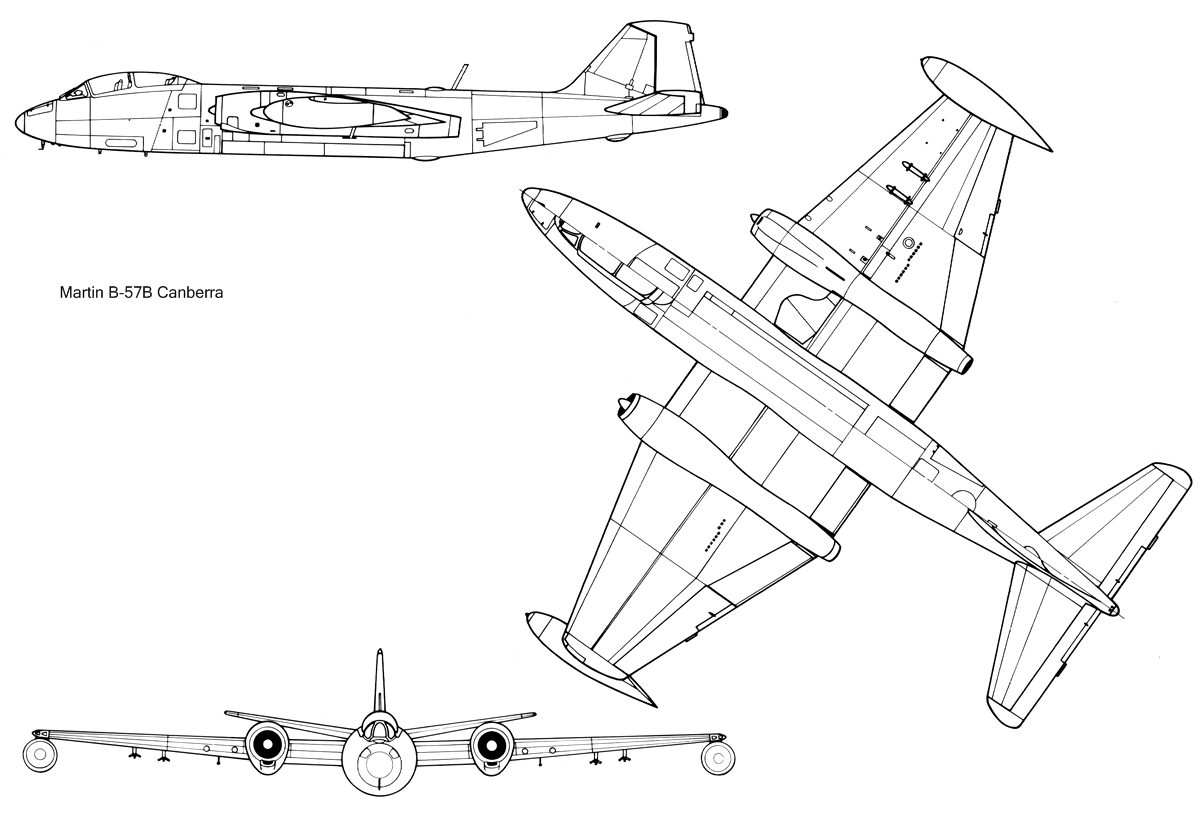Most of the RB-57s were retired in 1983, though a small handful were assigned to NASA for special, high-altitude research.
The RB-57A was designed as a twinjet tactical bomber, as well as a photo reconnaissance platform used during Vietnam and the Cold War. Only 67 of these aircraft were made due to the expected delivery of the more capable Douglas RB-66B. Some of the 67 aircraft were converted to electronic reconnaissance aircraft. The RB-57F and others were assigned to Air National Guard units.

Serial Number: 52-1492
Manufacturer: Glenn L. Martin Company
Crew: One pilot and one navigator/camera operator
Engines: Two Wright J-65-W-5 turbojets; 7,200 pounds thrust each
Wingspan: 64 feet (without tip tanks)
Length: 65 feet 6 inches
Height: 15 feet 6 inches
Weight: 49,950 pounds
Speed: 495 mph (cruising); 610 mph at 45,000 feet (maximum)
Range: 2,100 miles
Service Ceiling: 48,000 feet
Armament: Four 20mm cannon or eight .50-caliber machine guns plus 5,000 pounds ordnance
Cost: $1,071,000
The B-57 was used by the 461 Bombardment Group at Hill Air Force Base for training, transport and liaison efforts. After 1954, Hill Air Force Base gained responsibility for specialized supply of the B-57. Manufactured in 1955, the RB-57A on display served various assignments, including the 7499th Support Group for Operation “Heart Throb” during the Cold War. In the course of this mission, a two-man crew used cameras to look into Warsaw Pact territory without flying over it. In 1960, the aircraft retired and was restored to reflect its role in the Heart Throb mission.
Most of the RB-57s were retired in 1983, though a small handful were assigned to NASA for special, high-altitude research.
The Canberra was used to bomb targets in North and South Vietnam. It was the first jet bomber in U.S. service to drop ordinance in combat.
The RB variant was designed as a high-altitude reconnaissance and electronic warfare aircraft, though it would eventually spend most of its life photographing the continental U.S.
The Canberra had a combat range of just 950 miles, while its ferry range was a more impressive 2,720 miles.